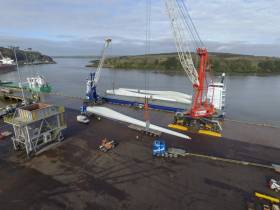Displaying items by tag: Rail Link
SFPC Press for Reopening of Foynes Port Rail Link
Since the announcement in October by Transport Minister, Shane Ross TD, of the €450m project to upgrade the N69 between Limerick and Foynes by 2026, pressure has been growing for funding to be provided for the currently mothballed rail line to Foynes Port to be re-opened.
The port on the Shannon Estuary, reports Fleet Transport, handles 10 million tonnes of cargo annually, is currently constricted by poor transport links to the rest of Ireland, but despite this 19% growth was achieved last year. The rail link would require less investment, estimated at €25m (2015 prices) – around 5% of the cost of the road. It potentially could be re-opened several years sooner if work were to commence promptly. A big advantage over the road scheme is that all land along the railway is already owned by CIE.
Shannon Foynes Port Company (SFPC) have been pressing for the re-opening of the line for many years now and were awarded EU funding to carry out a structural survey of it. Prior to this SFPC had arranged vegetation clearance in early 2015 to enable structural surveys to be carried out to the TEN-T link to the deep water port.
For further reading on calls to reopen the rail-link, click here.






























































